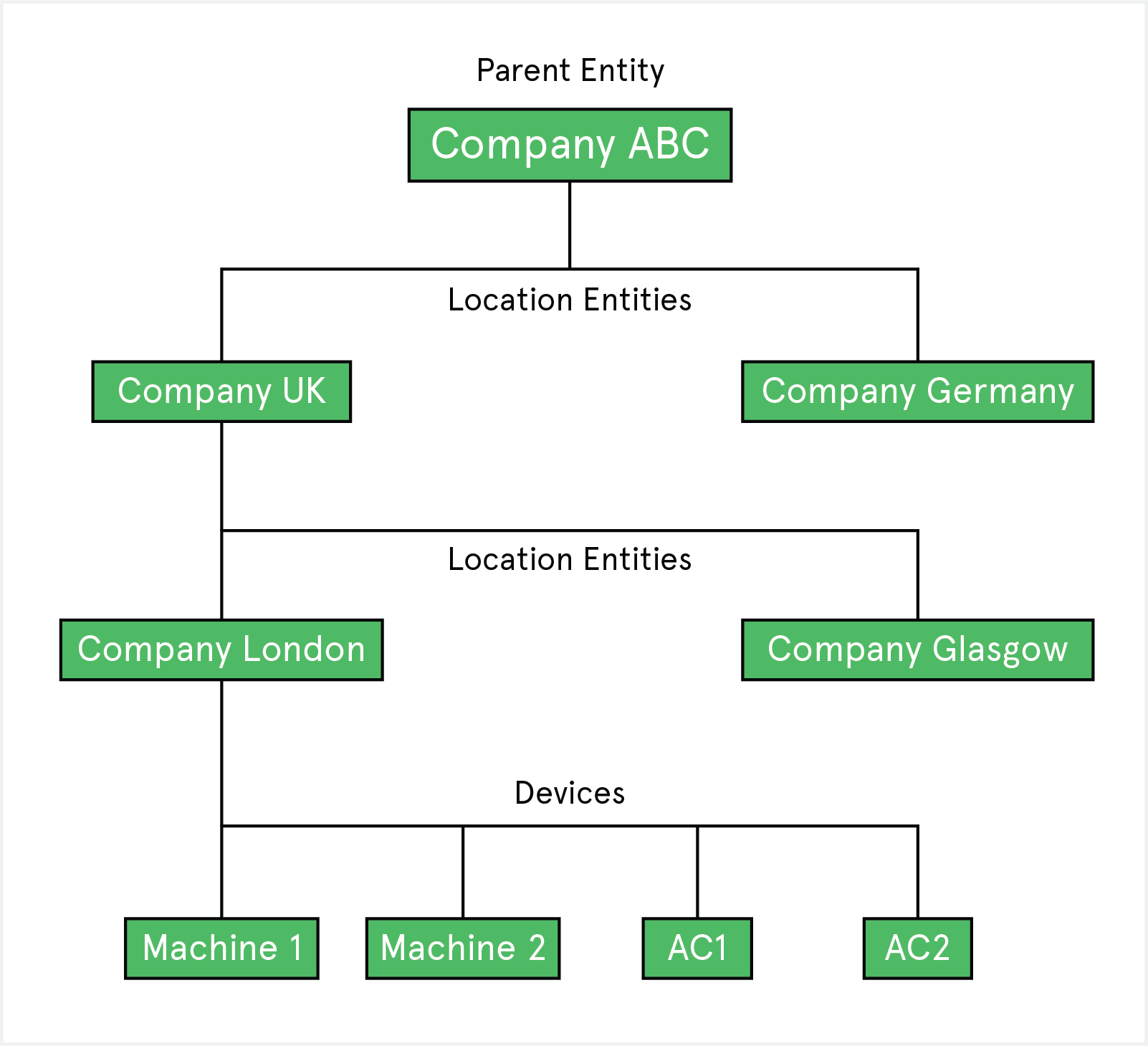Entity
In the dynamic landscape of the Internet of Things (IoT), managing an intricate web of devices, users, and companies efficiently can be a formidable challenge. Entity in /IOTCONNECT™ is a powerful tool that streamlines overseeing and analyzing diverse components as a cohesive unit. This article delves into the intricacies of the ‘Entity’ concept, exploring its structure, parent-child relationships, practical examples, and the significant advantages it offers for managing IoT ecosystems seamlessly.
Understanding the entity concept
At its core, an entity within the /IOTCONNECT™ ecosystem represents a collective grouping of components such as devices, users, or companies that warrant simultaneous monitoring and analysis. This abstraction provides a structured approach to managing the complexity inherent in IoT environments. Users can logically organize and interact with various elements through the entity framework, enabling a more efficient and insightful management experience.
Parent-child relationships: a fundamental framework
A cornerstone of the entity concept is the establishment of parent-child relationships. This relationship model, akin to a one-to-many hierarchy, offers distinct advantages:
Scalability: A parent entity can encompass numerous child entities, accommodating many components without limiting the system’s expansiveness.
Structured organization: Each child entity is logically associated with a parent entity, promoting a systematic arrangement that reflects real-world dependencies and hierarchies.
Holistic management: Parent entities can oversee and manage their child entities, enabling comprehensive control and effective delegation of responsibilities.
Creating, editing, and deleting entities
The process of managing entities within /IOTCONNECT™ is straightforward. Users can effortlessly create, edit, or delete entities based on the dynamic needs of their IoT ecosystem. This level of control ensures adaptability as requirements evolve, allowing for a finely tuned management experience.
Illustrative examples: parent-child relationships in action
Consider a hypothetical scenario involving offices of Company A:
- Global
- Americas
- USA
- USA Employees
- USA Customers
- USA Customers – Subscribed to more than a million messages per month
- USA Customers – Subscribed to less than a million but more than 30k messages per month
- Canada
- USA
- APAC
- EMEA
- Americas
In this intricate hierarchy, each bullet point represents an entity. This parent-child arrangement empowers efficient permissions management and facilitates agile data analysis, enhancing the overall IoT management experience.
Unlocking operational efficiency: use case of a manufacturing company
Imagine a manufacturing company with multiple factories, each housing diverse assets generating substantial data. These assets, termed ‘Entities’ in /IOTCONNECT™, encompass a spectrum of components:
Machines: Machine1, Machine2, Machine3…
Lights: LB1, LB2, LB3…
HVAC Units: AC1, AC2, AC3…
Generators: Generator1, Generator2, Generator3…
Computing Systems: CS1, CS2, CS3…
For a globally distributed company, entities are assigned based on location:
Company UK for the UK factory
Company Germany for the German factory
Even within a single country, a user can define finer location-based entities:
Company London for the London-based factory
Company Glasgow for the Glasgow-based factory

Benefits of the entity
The entity concept, coupled with meticulous planning, bestows a plethora of benefits:
Granular permissions: Entities facilitate precise control over permissions, ensuring that each entity can only manage devices within its purview.
Flexibility and agility: The parent-child hierarchy grants flexibility for adapting to dynamic operational needs while promoting agile data analysis.
Streamlined management: Efficient organization and structured relationships simplify complex device management, enhancing overall operational efficiency.
Conclusion
In the intricate realm of IoT management, the entity concept emerges as a pivotal framework, allowing organizations to tame the complexity of multi-device, multi-user, and multi-company ecosystems. By establishing parent-child relationships and embracing a structured approach, /IOTCONNECT™ empowers users to seamlessly manage diverse components, unlocking operational efficiency and fostering data-driven decision-making. With the power of entity in your grasp, the future of IoT management becomes both manageable and insightful.


